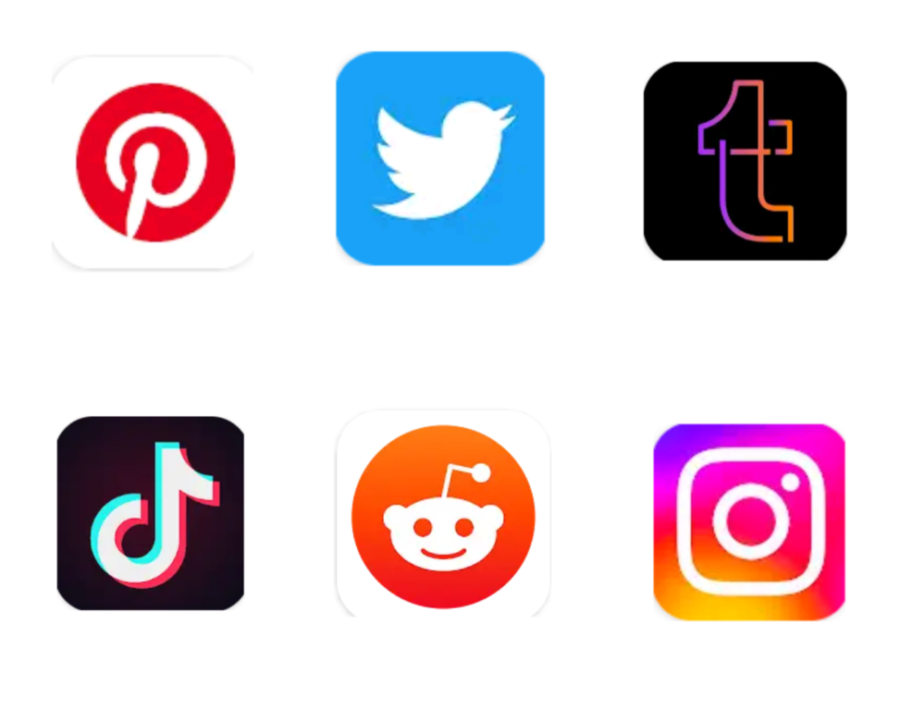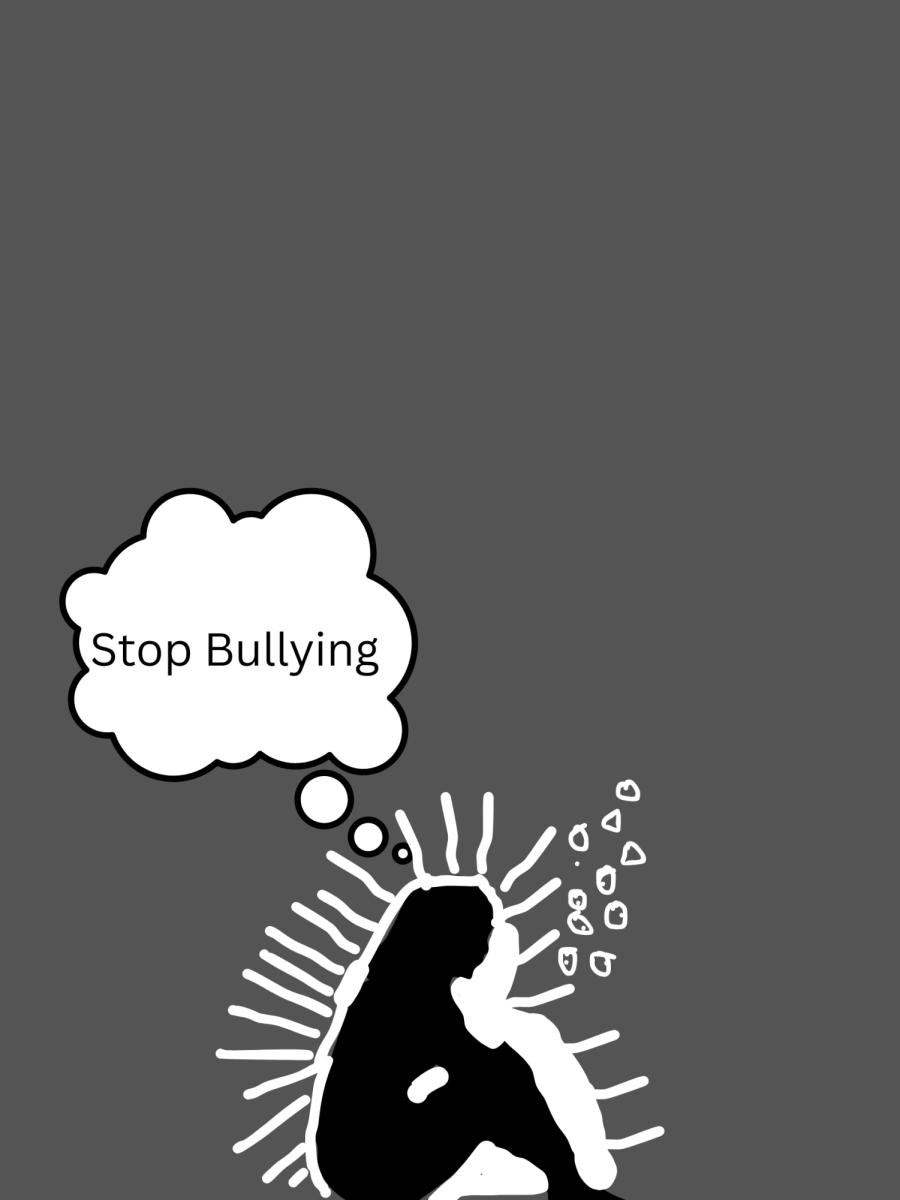Social media rewrote the advertising game
Array of logos for the social media apps Pinterest, Twitter, Tumblr, TikTok, Reddit, and Instagram, taken from the Google Play Store
September 15, 2022
There’s a lull in the day, a free moment when there is nothing to do but exist. It is then when a person turns to social media, needing something to keep them occupied in this moment. Scrolling through, there’s things to be expected. Friends having fun, the occasional joke to steal a giggle, maybe even some advice. Then, there it is, a post from a brand account. It’s not explicitly advertising, but it steals your attention nonetheless. It’s just another joke, made funnier for the fact that it is made by a company you would normally take seriously.
This is the reality of social media now. Rather than create advertisements blatantly trying to sell their product or service, many companies are turning to a more casual approach. Social media has given companies new ways to advertise. With an ever-decreasing attention span in people of today, companies are forced to be creative with their advertising.
“Brands that emphasize peace of mind, tradition, family—the comfort of a connection to others—will do well. Those who can add delight to the customer experience will excel,” said Jeff Bradford, Forbes Agency Council member from Dalton Agency, in a Forbes article on brand marketing trends.
It’s the companies that strive to amuse customers that will do well in this climate. Accounts that do this have been growing in popularity. The Empire State Building TikTok account is a blatant example of this, boasting 496.8K followers. This account has personified the building, turning to jokes and current trends to keep themselves afloat, all while still advertising it as a tourist attraction. The TikTok account and building itself have even been participating in the conversation surrounding current media. On August 18th, the building had its lights changed to blue to celebrate the birthday of the well-known fictional character Percy Jackson. The account, on multiple occasions, has posted videos about popular singer Taylor Swift, including urging her to release 1989 (Taylor’s Version). This use of trends has kept it afloat on social media.
Lisa Montenegro, member of the Forbes Agency Council from DMX Marketing, said in the same Forbes article on brand marketing trends, “Between Tik Tok, Instagram Reels and YouTube Shorts, [short-form video] is one of the main ways to connect with your followers and a wider audience.” Adapting to this shift in social media use has been pertinent for any company that hopes to successfully advertise. However, that doesn’t mean videos are the only successful way to advertise something.
Accounts advertising for entertainment media in particular are becoming more in tune with their fanbases. This is true both for widely popular media and media with smaller fanbases. “Brands need to analyze the motivations behind their customers’ behaviors. They will discover that this is the best path to elevating personalization and ensuring greater brand affinity.” said Forbes Agency Counsel member Roger Hurni in the Forbes article. Accounts such as that of the Stranger Things Instagram account specifically market to their fans and those of that age range for popularity. This ranges from posting clips from the show with captions aimed at hooking their teenage & young adult fans to posting about specific jokes in the fandom.
Stranger Things isn’t the only brand account doing this. Smaller brand accounts, such as the Instagram account for the Nancy Drew PC games employ this strategy in a more personal way than larger brands tend to. The account reposts posts from other creators about their games and will repost announcements that people are live streaming their games. They make merchandise that is specifically poking fun at their fanbase, such as the Big Island Mike bucket hat. More interesting is the Back to School with SleuthStyle backpack, a collaboration with a small company, SleuthStyle, that makes fan merchandise. Keeping the fanbase so closely intertwined with the company is a rare thing to find, even in this new climate for more laid back advertising.
Personalization of advertising isn’t an inherently harmful thing. However, social media has not completely rewritten advertising to be a perfect, peaceful thing. Companies, particularly those that make something to buy, are partaking in sustainable marketing. Sustainable marketing is “simply marketers working together to foster marketing activities and strategies that promote environmental wellbeing, social equity, and economic development in a manner that enhances the business.” wrote Adanma Onuoha in the Network for Business Stability article on Sustainable Marketing. This can inspire a company to make good, thoughtful changes to their product. However, some companies aren’t so willing to change.
“[…] brands will need to both understand the social values of their customer base and make real, tangible changes to practices that are out of alignment.” Chris Martin said in Forbes’ key marketing strategies article. It’s becoming increasingly pertinent that companies adapt to supporting what their customers view as important. Green marketing is one facet of that, too often used dishonestly to pull people in.
Adanma Onuoha continued writing on sustainable marketing, “A product might seem ‘green’ by some metrics but not be truly necessary or sustainable.” This is what greenwashing is, and it’s not uncommon either.
“Last year TerraChoice issued its second report on [greenwashing], identifying 2,219 products making green claims—an increase of 79% over the company’s first report two years earlier…TerraChoice also concluded that 98% of those products were guilty of greenwashing.” Richard Dahl wrote in the National Library of Medicine article about greenwashing. In an effort to get more traction, companies claim to be “green”, when they are in reality dishonestly advertising their product. The average person isn’t well equipped to do thorough research on a product to figure out if it is truly “green”, so they see that label and are more likely to buy. However, greenwashing has made it so those people are being tricked, and people and the environment alike are suffering.
Greenwashing is nothing more than a strategy used so that the company can earn more money. Richard Dahl continued in his greenwashing article, “We’re also seeing these aggressive, competitive green advertisements where a company will say ‘Not only are we green, not only are we making significant efforts toward sustainability, but our competitors aren’t.’” Not only will companies use their own supposed “green” status to trick their customers, but they use it to attack other companies.
Personalized, fun advertising may be a bright spot of change in advertising, but it allows for a larger problem. Advertising to a population who becomes less willing to listen to wordy advertisements allows for these shortcuts to happen. As a people, it becomes more pertinent for the rising generations to be smarter, and more willing to research. Research is how greenwashing can be properly combated, and the environment can be protected.





